Rotterdam is inaugurating a new international cultural hub: the Fenix, a museum entirely dedicated to the theme of migration, opens its doors on May 16, 2025 in the Katendrecht district, a formerly marginal port area that is now undergoing extensive urban redevelopment. The building that houses it is a former 1923 warehouse, restored and transformed through a project by Chinese architect Ma Yansong, founder of MAD Architects, a firm known for its futuristic and globally recognized interventions. For MAD, this is the first cultural project realized in Europe.
Fenix is located in a building that was once part of the world’s largest transshipment warehouse, located in Rotterdam’s historic port district on the south bank of the Meuse River. It was from the docks around this warehouse that millions of European migrants embarked for destinations such as America and Canada beginning in the late 19th century, including such illustrious figures as Albert Einstein, Willem de Kooning, and Max Beckmann. The departure and arrival of people made Rotterdam the city it is today, shaped by the more than 170 nationalities of its inhabitants. Rotterdam has a long history as an important trading hub, with its deep shipping links and strategic location with easy access to the North Sea and the Rhine, making it an ideal shipping route and gateway to Europe.
In the 19th century, Rotterdam’s port facilities and infrastructure as an international trading hub grew dramatically, expanding to meet the new needs and opportunities generated by the Industrial Revolution, with larger steamships, mechanized loading cranes, and steel bridges connecting both sides of the Meuse River. The surrounding areas of Katendrecht and Rijnhaven underwent profound changes, transforming into a dynamic international shipping hub. The district became a place of residence for migrant communities. Continental Europe’s first Chinatown developed in Katendrecht, and Cape Verdean sailors and Surinamese jazz musicians, among others, found their home there. The warehouse where Fenix is based was at the center of this expansion in Rotterdam’s history. Built by the architect Cornelis Nicolaas van Goor (1861-1945), completed in 1922 and operational since 1923, the building served as an important storage and shipping building for the Holland America Line, a thriving Dutch freight and passenger transport company founded in Rotterdam in 1873, which provided steamship services between the Netherlands and America and facilitated the travels of millions of emigrants in the late 19th and early 20th centuries. Over 360 meters long and made of reinforced concrete, the vast warehouse was the largest in the world at the time of its construction. It was where the Holland America Line loaded and unloaded its ships carrying goods from destinations as far away as South Africa, Canada, Mexico and the Gulf States.
“When we were asked to work on Fenix,” said Ma Yansong, founder of MAD Architects, “we knew we had to create a dialogue with the existing building and its past, which is full of stories of migration, memory and uncertainty. The Tornado is the future, but it has roots in the past. For me, it is a metaphor for the migrant journeys that have passed through this building.”
“The story of Fenix is inextricably linked to Rotterdam and its communities,” said Anne Kremers, Director of Fenix, “but it is also the story of the whole world. It is a tale of arrivals and departures, of constant changes to face the future. From the crossing of the Berlin Wall to departures to the United States on the great ocean liners, to the arrival of new communities from all over the world to build, create and learn, Fenix is a mirror of the experiences and stories of people everywhere, told through art.”
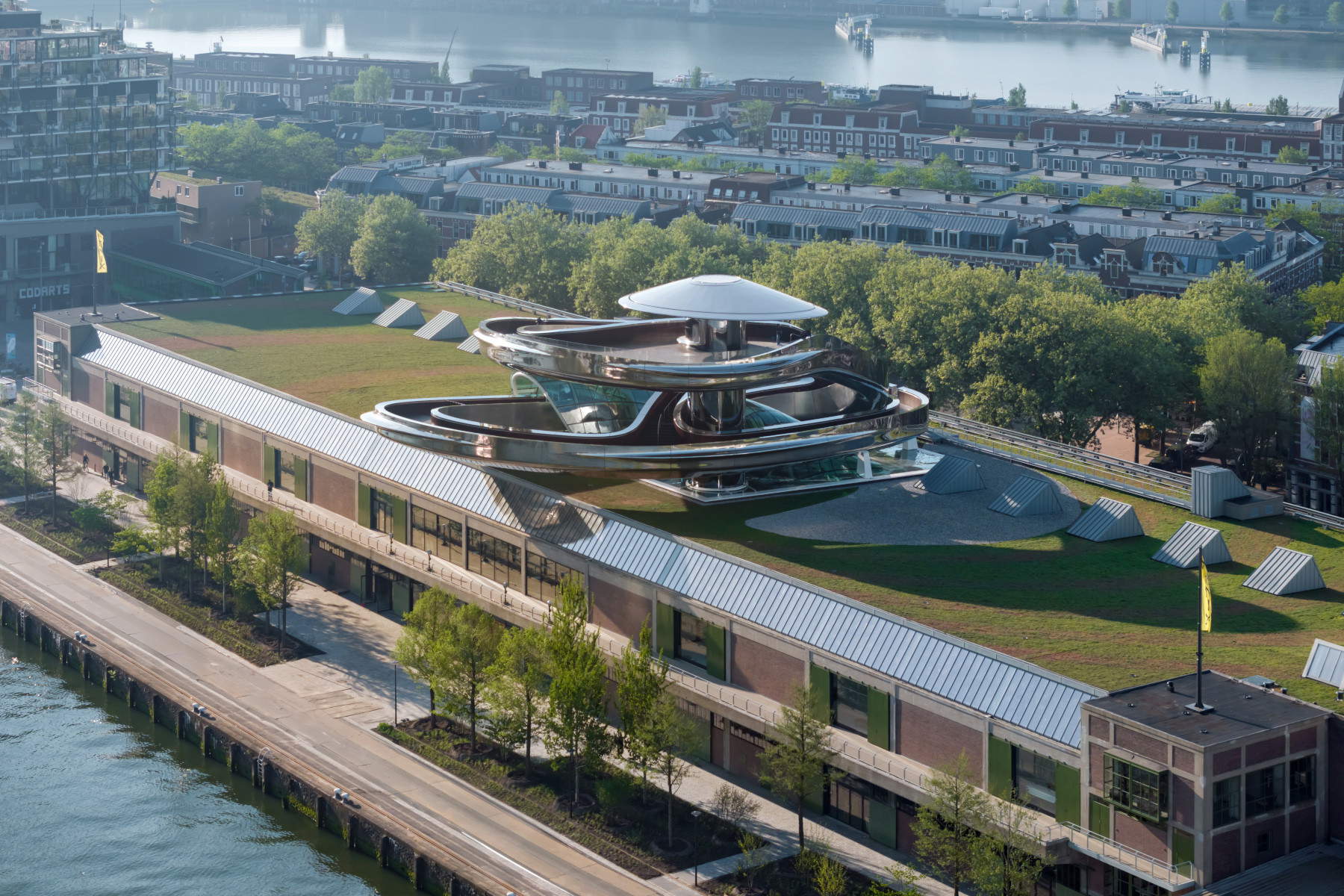
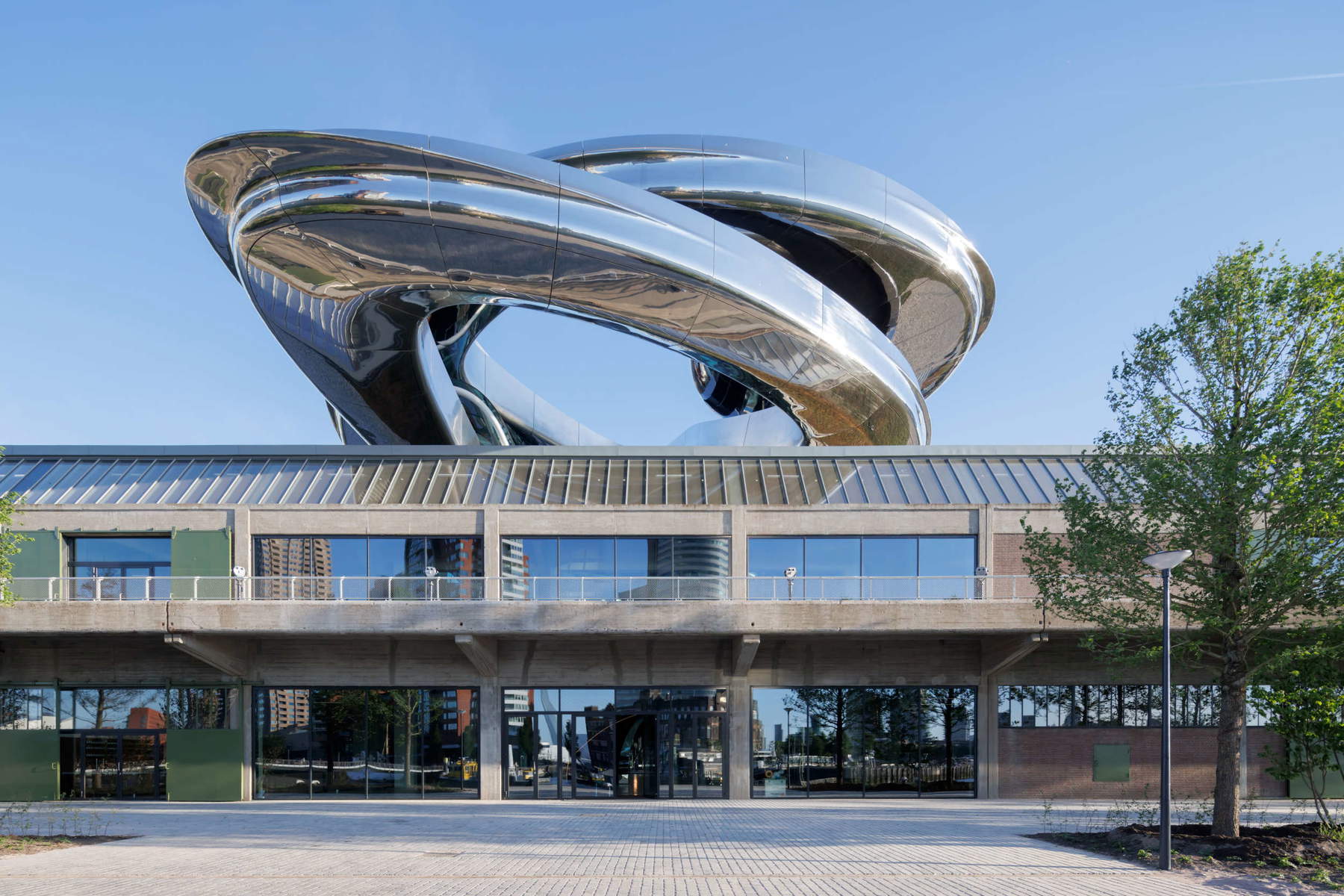
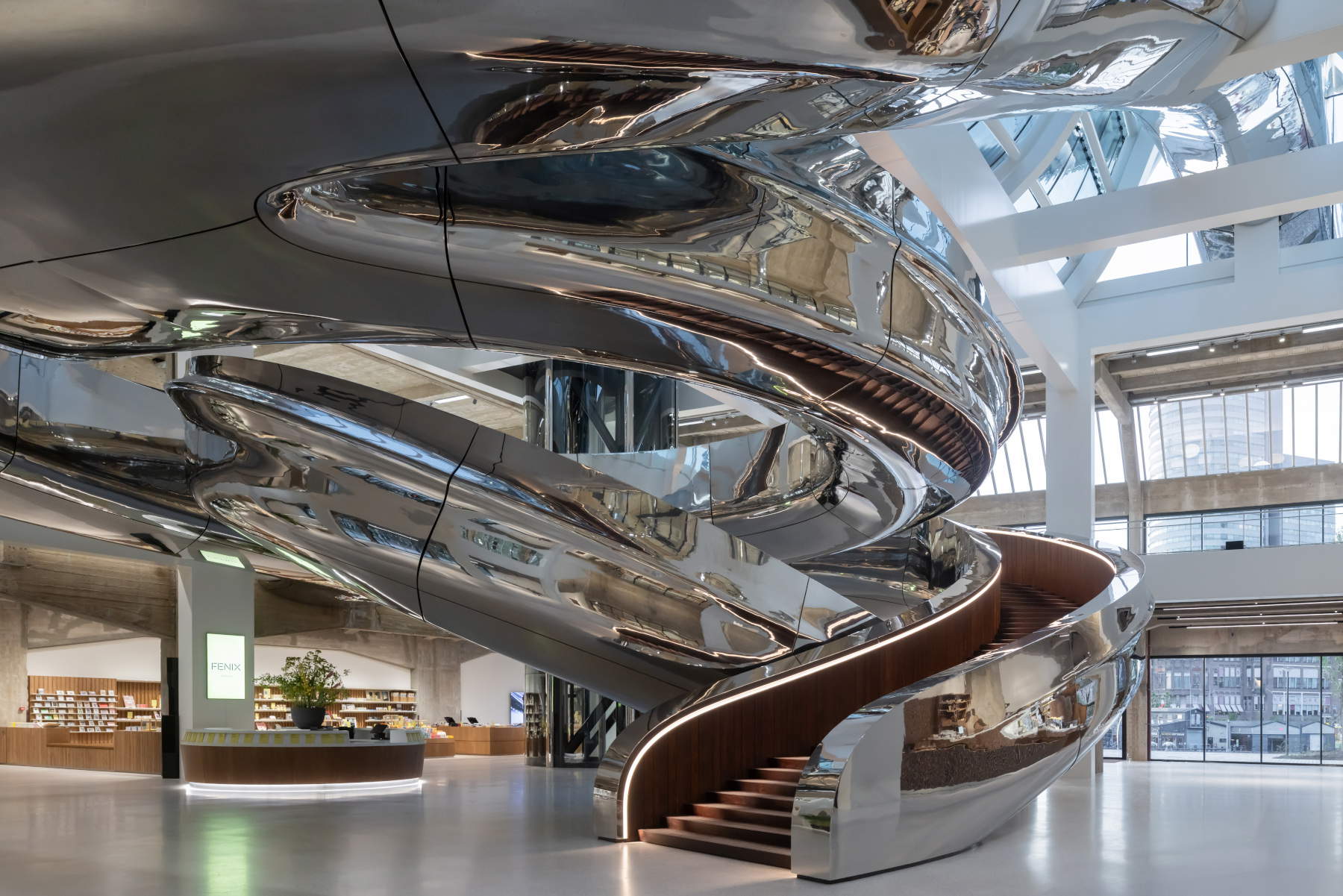
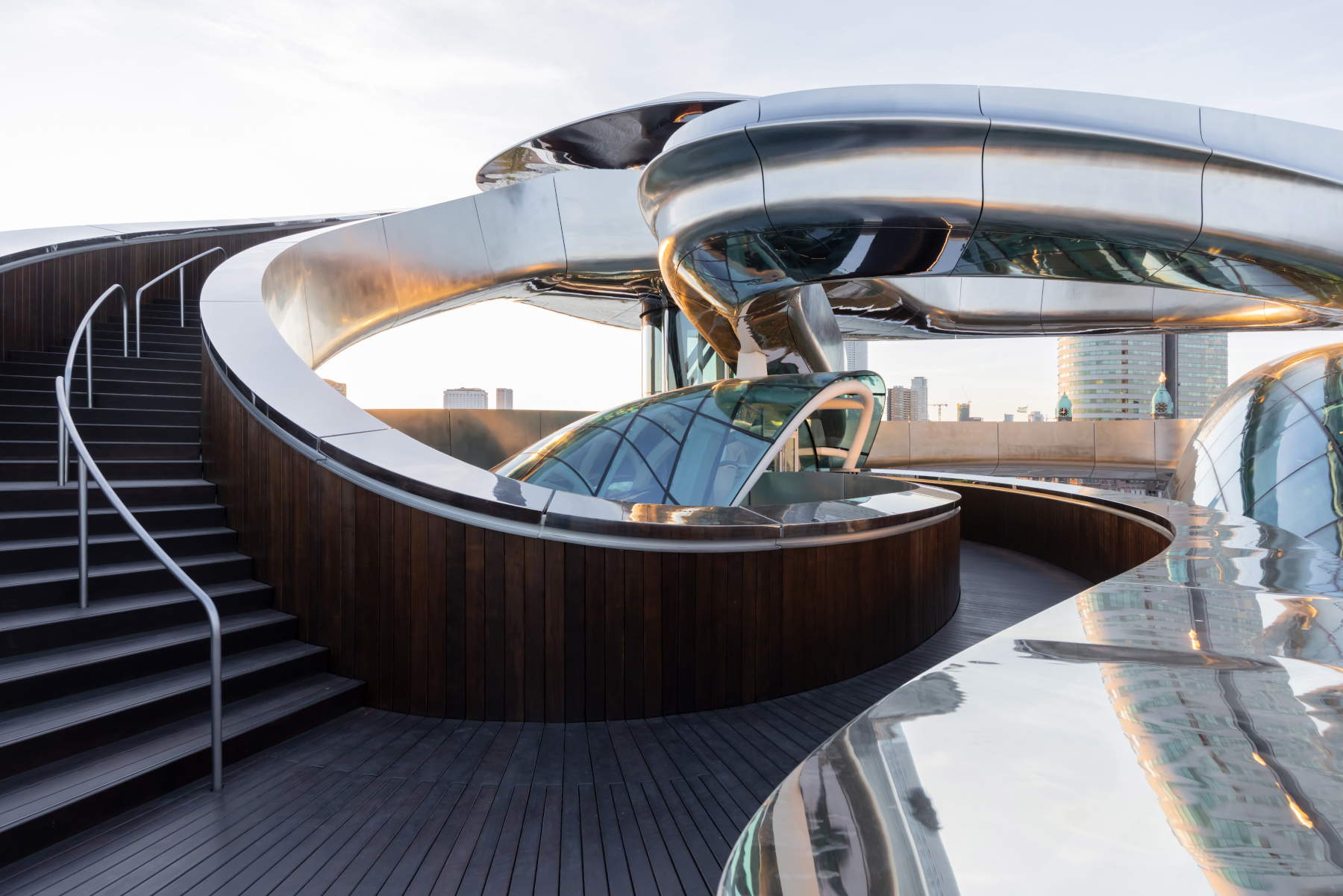
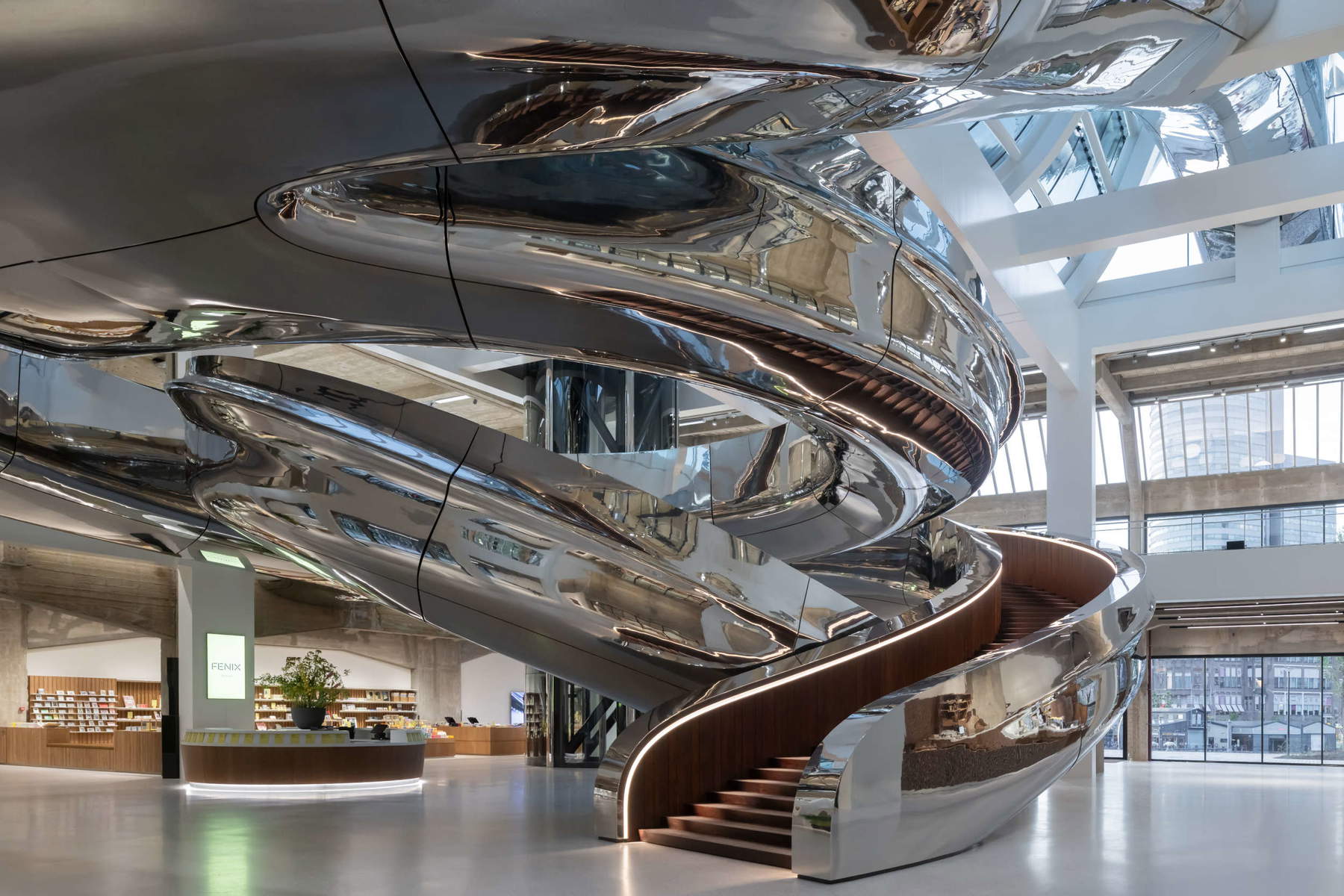
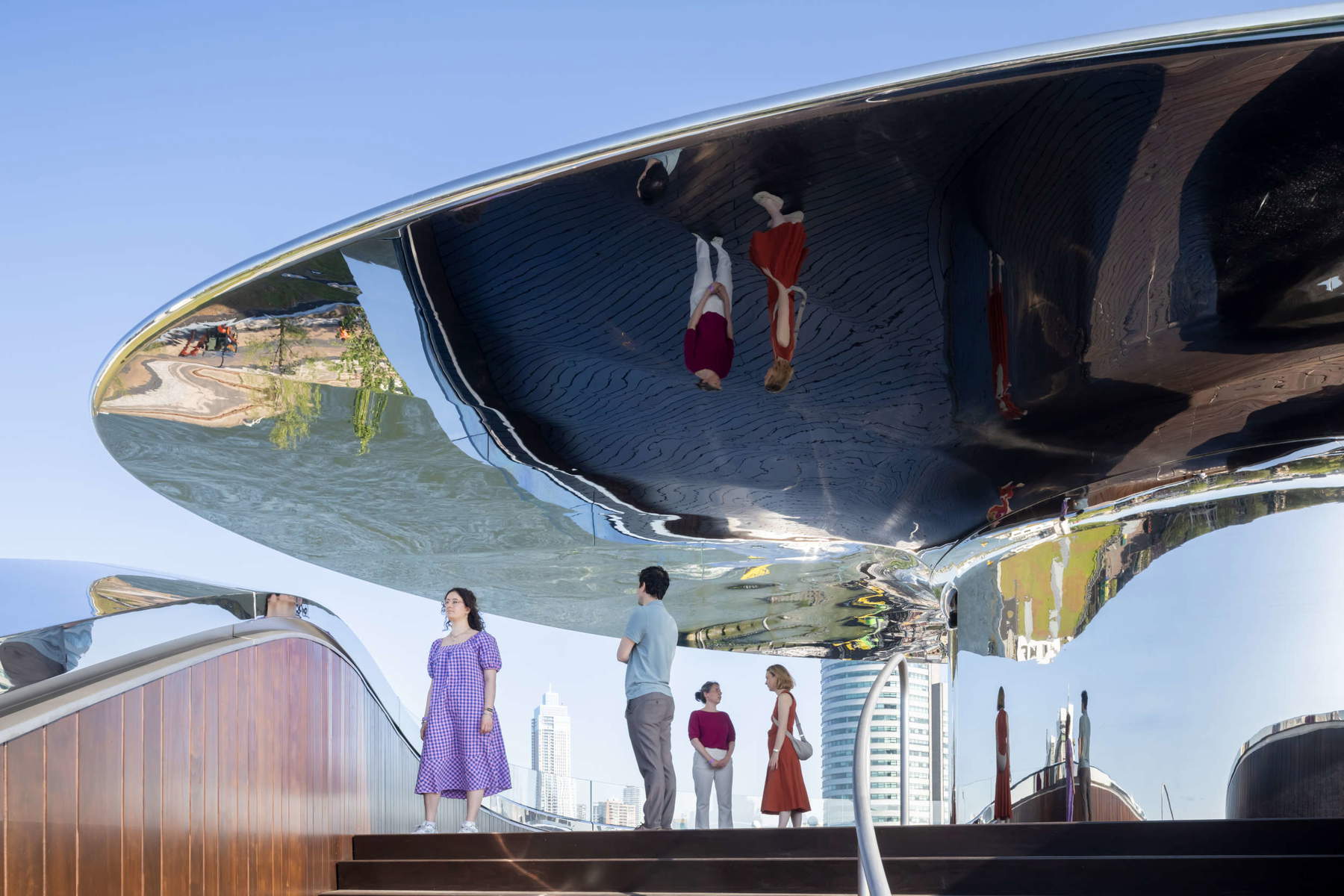
The museum occupies 16,000 square meters inside the old warehouse. A central element of the project is the so-called Tornado, a double-helix staircase that rises from the ground floor to the suspended terrace, offering panoramic views of the city, the Maas River and the New York Hotel, the former home of the Holland America Line. The staircase, conceived as an organic and dynamic structure, visually recalls the upward movement of air, an implicit symbol of migration routes. Restoration of the 172-meter-long façade began in 2018 and was carried out in collaboration with Dutch architectural heritage conservation firm Bureau Polderman. Some architectural details date back to 1923, the year the warehouse opened, while others were part of the 1948-1950 reconstruction plan. All elements along the facade have been restored, redecorated or reconstructed. The characteristic windows have been restored to reflect the 1923 style. The 2,200 square meters of the south facade were sandblasted and reapplied cementitious plaster. The characteristic sliding doors at street level were restored to their original postwar state, with doors and frames repainted in their original green color. A serene rhythm of columns, windows and facades emerged, emphasizing the building’s horizontal quality.
Now the Fenix houses two floors of galleries devoted to the permanent collection, temporary exhibitions, installations and an evolving cultural program. The inaugural exhibition is titled All Directions: Art That Moves You and offers an extensive journey between contemporary art and historical documentation. On display are 150 works and objects from the museum’s collection, acquired over the past five years, and signed by internationally renowned artists such as Francis Alÿs, Max Beckmann, Sophie Calle, Honoré Daumier, Jeremy Deller, Rineke Dijkstra, Omar Victor Diop, Shilpa Gupta, Alfredo Jaar, William Kentridge, Kimsooja, Laetitia Ky, Steve McQueen, Adrian Paci, Cornelia Parker, Gordon Parks, Grayson Perry, Ugo Rondinone, Yinka Shonibare, Alfred Stieglitz, Do Ho Suh, Bill Viola, and Danh Vō.
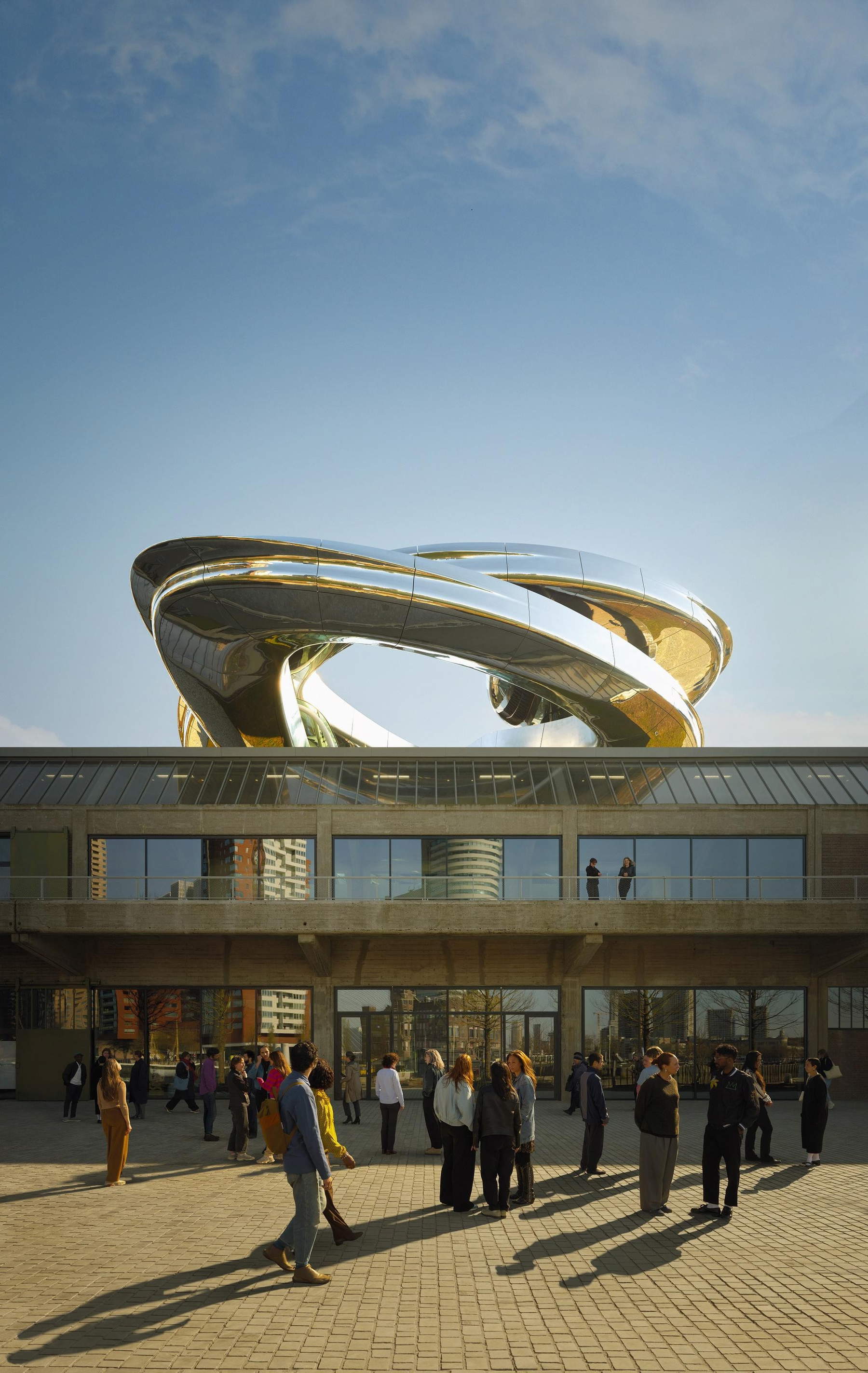
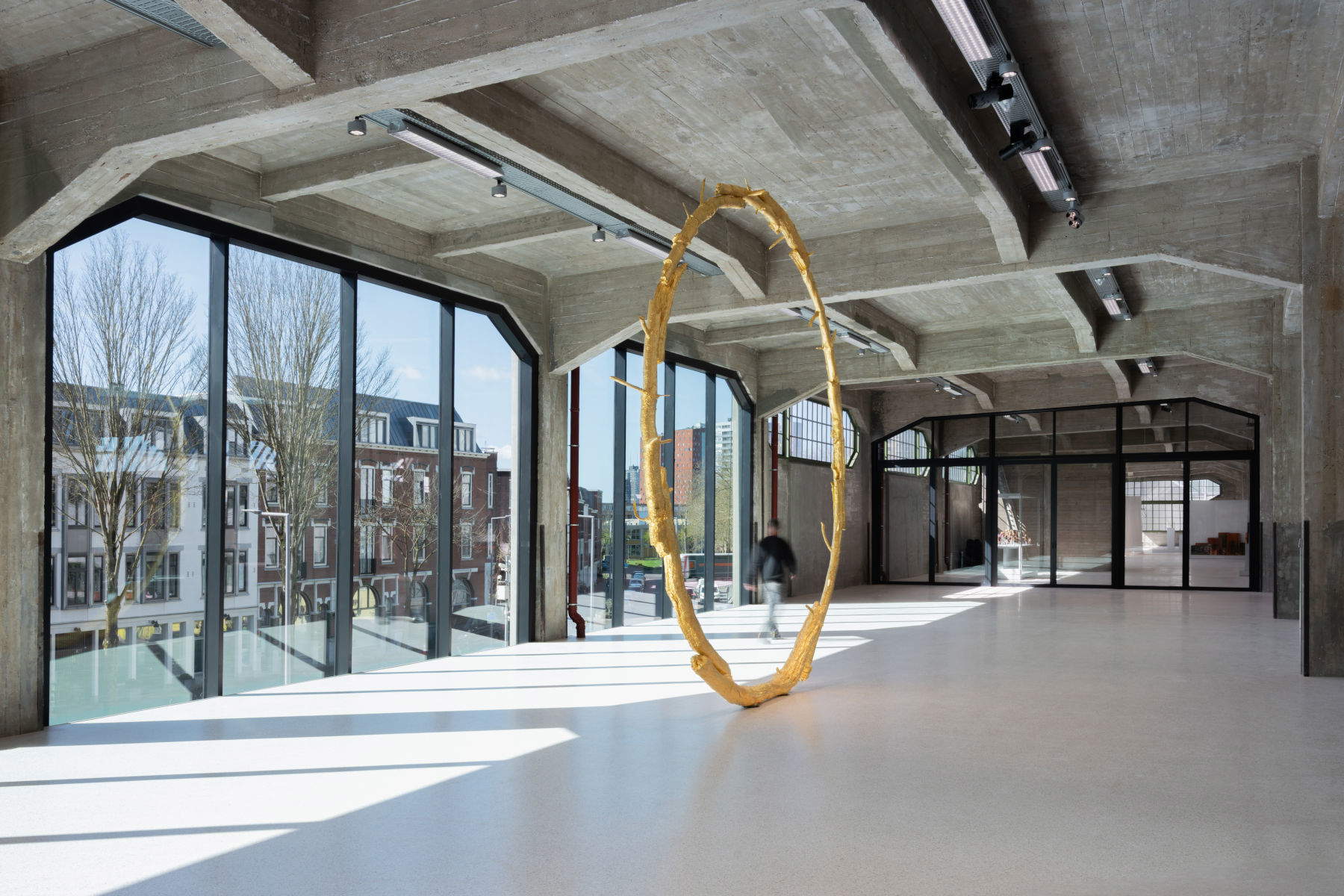
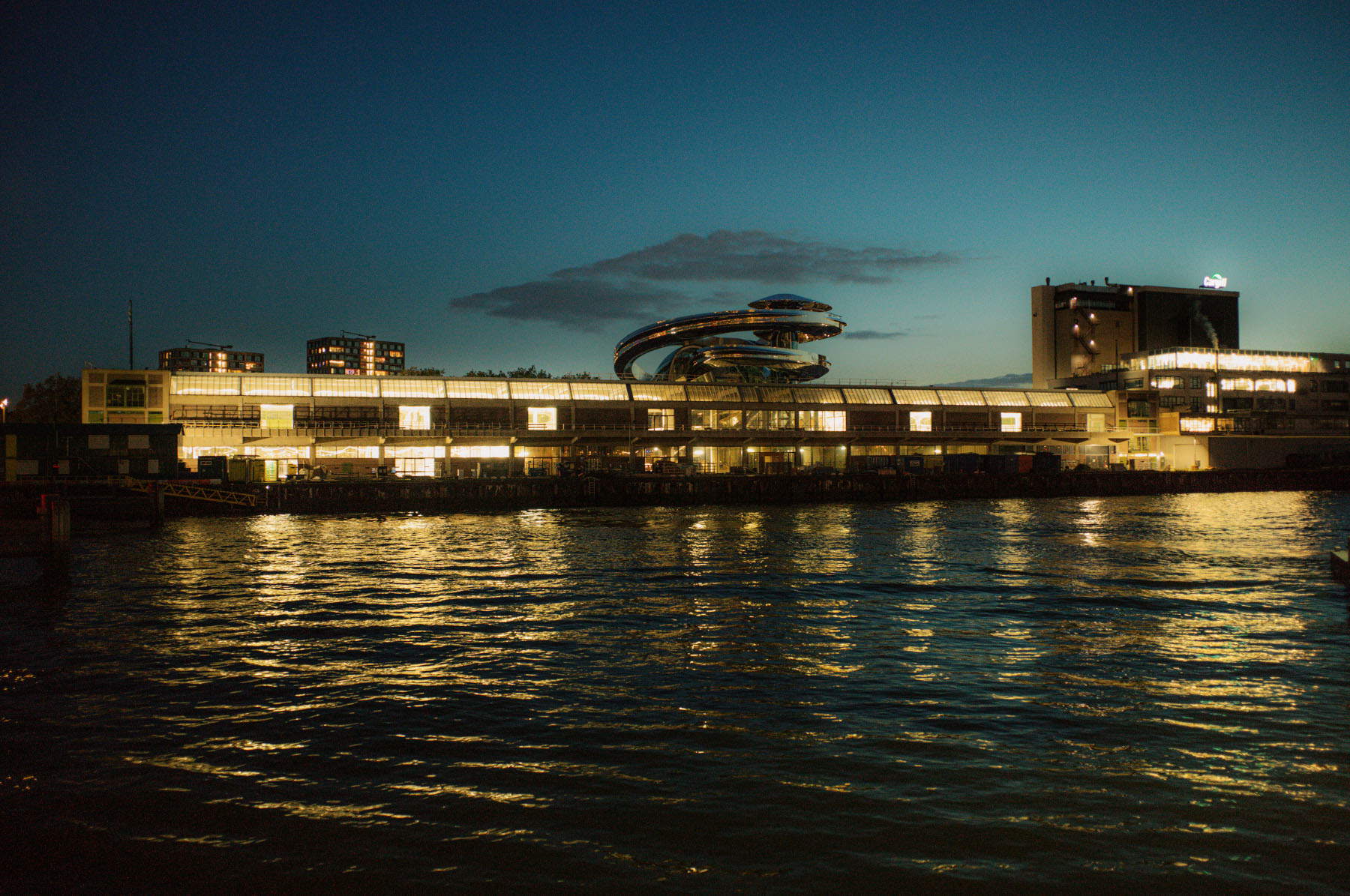
The exhibit also includes personal items collected among Rotterdam citizens, who contributed family stories, memories, and materials related to their own migration experiences. Notable exhibits include a section of the Berlin Wall, bearing witness to the physical and symbolic barriers that have marked the borders between people and territories over time. An important section of the museum is devoted to photography. The exhibition The Family of Migrants is inspired by The Family of Man, the photographic exhibition curated by Edward Steichen and presented at MoMA in 1955, which became one of the best-known photographic exhibition projects of the 20th century. The Family of Migrants brings together 194 photographs by 136 photographers from 55 countries, addressing the theme of migration through portraits, reportage and documentary images. The list of photographers includes Abbas, Eva Besnyö, Chien-Chi Chang, Fouad Elkoury, Robert de Hartogh, Lewis Hine, Ata Kandó, Dorothea Lange, Steve McCurry, Yasuhiro Ogawa, Emin Özmen and Sergey Ponomarev.
Also among the museum’s must-see sections is The Suitcase Labyrinth, a monumental interactive installation consisting of 2,000 suitcases donated to the museum, bringing to life a collection of personal stories from countries, cultures and communities around the world. The collection ranges from large leather trunks with elaborate finishes to small battered suitcases with stickers indicating their destination. Some have been passed down from generation to generation along with stories of life-changing relocations; others have been acquired more recently. Several suitcases, which left Rotterdam and then ended up around the world, have been donated from the United States, Canada, South Africa, Australia, and New Zealand, and now return to their port of departure. Visitors will be taken on an interactive audio tour that will reveal selected personal stories about the suitcases’ previous owners and their journeys of love, homesickness, hope and longing. The Labyrinth of Suitcases also features (Kindness) of (Strangers), a work by Chilean artist Alfredo Jaar.
The museum is not limited to its exhibition function. It has commissioned new works from emerging artists from Europe, the United States and Asia. Among the names involved are Beya Gille Gacha, Raquel van Haver, Hugo McCloud, Chae Eun Rhee, Martin and Inge Riebeek, Ari Versluis and Ellie Uyttenbroek, and Efrat Zehavi. The commissions offer a fresh and contemporary look at themes of shifting identities, fluid belongings, and cultural transformations triggered by human displacement. A special space is reserved for the Plein, a 2,275-square-meter covered plaza, accessible on the ground floor, designed as a meeting place between the museum and the city. Public events, community activities, art performances, Dutch language classes and events dedicated to gastronomic culture take place here. All events held in the Plein will be free and open to the public and will help strengthen Fenix’s role as a civic as well as a cultural place. There will also be a kiosk in the square where visitors can read newspapers from around the world and buy a drink or snack. The museum’s retail and dining options include O Café and Bakery, led by Michelin-starred Turkish chef Maksut Ashkar, and Granucci Gelato, an ice cream shop serving the award-winning artisanal ice cream of the Granucci family, which has been making ice cream in the Netherlands since 1929. The Espresso Bar is located inside the exhibition space on the second floor of the museum and offers a view of the city. The museum store is located in the main entrance area and offers tableware, games, food and other items to create a sense of home and belonging.
 |
| Fenix, the global museum dedicated to migration, opens in Rotterdam |
Warning: the translation into English of the original Italian article was created using automatic tools. We undertake to review all articles, but we do not guarantee the total absence of inaccuracies in the translation due to the program. You can find the original by clicking on the ITA button. If you find any mistake,please contact us.